Day 6: To Polperro, Looe, and Kenn
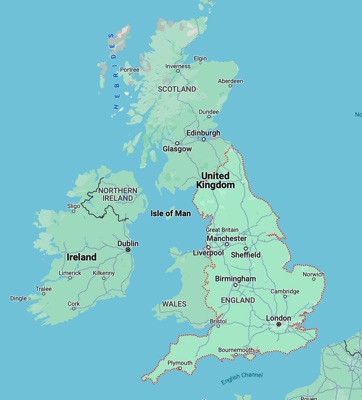
The journey begins in London, England. We then proceed west through Southern England before crossing into Wales. The religion of England and Wales is Protestantism and the currency is the pound sterling.
We then take a boat west to enter Ireland. Ireland is a very independent nation where the main religion is Roman Catholicism. Their currency in Ireland is the EuroDollar. We travel through Ireland, including their capital city of Dublin.
We proceed north crossing into Northern Ireland, an important part of the United Kingdom where the primary religion is Protestantism and their currency is that of the United Kingdom which is the pound sterling.
We then travel by boat east to the Island of Great Britain (which is the countries of England, Wales and Scotland) back into England before proceeding north to Scotland. The religion in Scotland is Protestantism and their currency is the pound sterling.
You can see below a box of 47 small photos. You can also see only 35 photos, but click on the #1 to #2 to view the next 20 photos. You can click on any photo to see it enlarged OR just click on the 1st photo and wait....it will present a slide show of all 35 photos that advances every 5 seconds.
Feel free to
DROP ME A
MESSAGE!
Below the flags of the U.S. and England is the gate that was the entrance for people to enter the ships, the first ships that would sail from England to the new land!
This is where the first inhabitants left from Europe to settle in the new Americas. It is also the site where people who boarded the ship Mayflower left on September 16, 1620 to live in the new land that 100+ years later would become America.
We started our first day as a Trafalgar Tour by putting our luggage outside our rooms at 6:30 am and meeting for breakfast in the Hilton Hotel restaurant at 7 am. We would meet our guide at 7:45 am and get on our bus for our first journey.
Our first location was to visit Stonebenge, one of the world's most famous sites that was created in the 300s BCE. What I had no idea is that this famous site is only 3.5 hours west of London (see the first stop on the map above). What a site to see (see my extensive collection of photos below). We spent 2.25 hours here to walk around the site. There is also an extensive snack shop and of course a great gift shop. I ate 1/2 of an egg sandwich and some vinigar ships before getting back on our "coach" (as they call it in the rest of the world other than the U.S.) for our journey for a two-nite stay in Plymouth, a small city of only approx. 250,000 city, but the largest city in southwest England!
We next went 27 miles west from Plymouth to Polperro, a very small village with times going back hundreds of years. The entire terrain is England is so beautiful, green and bountiful with trees, green grass and crops. However, once you get off the highways, the roadways are incredibly small. Many times, the "coach" and cars traveling in the opposite direction would have to stop and proceed extremely slow through the terrain to squeeze through. Of course, our driver, Sid, is just incredible for what he does.
Here are only 2 photos, but scroll down to the photos below to view how quaint and pleasant is this village. Though I truly love living in the big city, I would like to spend extended time--one to two months--in a village like this to relax and work on fun, special projects. I hope to return to this village some day!
Next, we traveled east to Looe. As you can see by the photo, the roads were very night with the small cars trying to squeeze by between the mountain and the coach.
The village at Looe was just like Polperro, but a little larger. But it was just as quaint with all of the small residences and small busineesses. We were stopping here for lunch. For many people, a typical meal in this part of England is the cornish baked meal. We were in the Cornwall part of England where this meal is the most obvious! And their baked meals, both with meats, vegetables, and or treats, are fabulous. (Of course, the same meal in Argentina is called the empanada!) As I walked down one of the tiny roads, I saw that a cornish was available just about everywhere. But the place I have with the photo had a long line down the side...so this Cornish Bakehouse must be the best. It was lunch time (approx 1 pm), so I thought I would continue walking and grab a cornish on my way back. When I continued to walk, at the end of the road was their local beach facing the Celtic Sea so the south.
Walking back down the road towards the coach, I hoped to get a cornish from the Cornish Bakehouse, but the line was even longer at 2 pm. They MUST be the best place to get a super cornish, so I will return to this place some day!
We then took a hour to return to Plymouth returning at 3:30. We were to meet at the coach again at 5 pm for our evening visit to another site!
Photos of the tour of the Plymouth Harbor
You can see below a box of 33 small photos. You can also see only 33 photos, but click on the #1 to #2 to view the next 20 photos. You can click on any photo to see it enlarged OR just click on the 1st photo and wait....it will present a slide show of all 35 photos that advances every 5 seconds.
Photos of the small village of Polperro
You can see below a box of 33 small photos. You can also see only 14 photos, but click on the #1 to #1 to view the next 20 photos. You can click on any photo to see it enlarged OR just click on the 1st photo and wait....it will present a slide show of all 14 photos that advances every 5 seconds.
Photos of the Looe
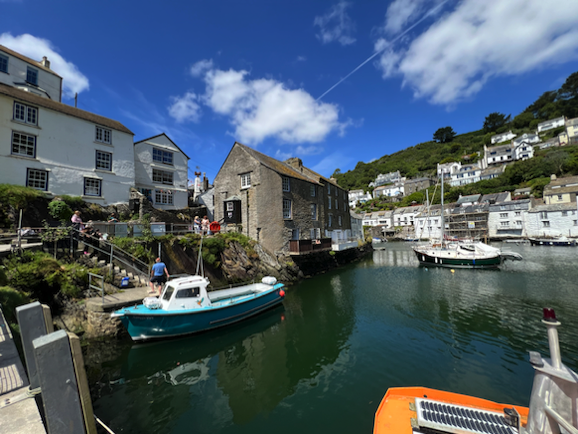
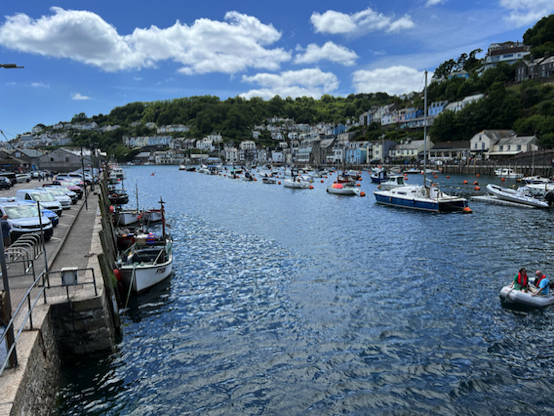
Next, to Polperro
Then, on to Looe
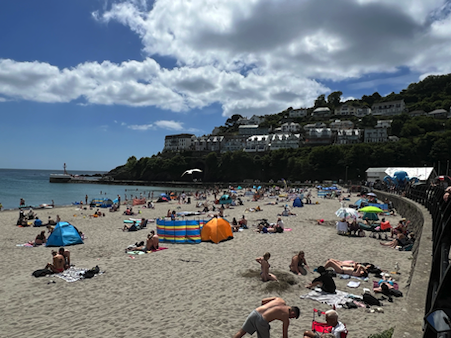
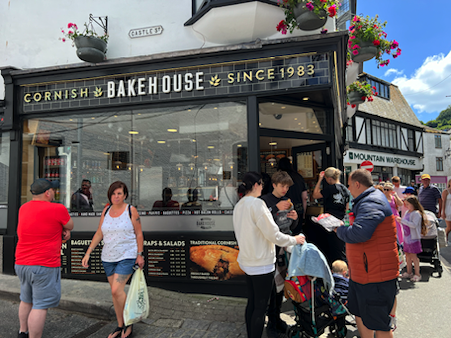
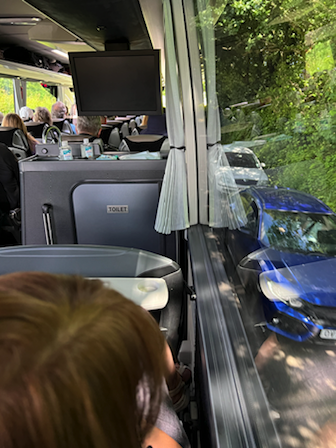
Evening in the village of Kenn and St. Andrew's Church
After our 1.5 hour break at the hotel, we met on the coach to travel 40 miles northeast to the tiny village of Kenn. In Kenn, we first had a great "pub grub" or our dinner meal in a village that started in 1290 CE! I had the beef, potatoes and vegetables cooked and served just like those of Medieval Times. My desert was a great cake and scoop of ice cream.

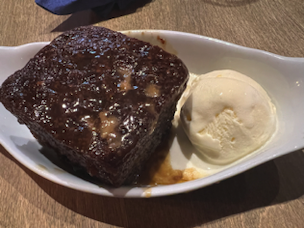
After our meal, we walked down the street to visit St. Andrew's Church. We had the best guide who presented to us the history of this church. This building started as a monastary, but would expend to become a church for the Roman Catholics. (Of course, later it will switch to the Protestants during the Reformation.) This church started in the late 1200s CE. I would like to present all of the info that our guide presented, but I just don't have the space to talk about the stained glass windows, the geography of the church, the detail of the pews of the church, etc. I will present this info to my students in the classroom when we study the presence of Christianity in England during Medieval Times. (Please see all of the extra photos below.)
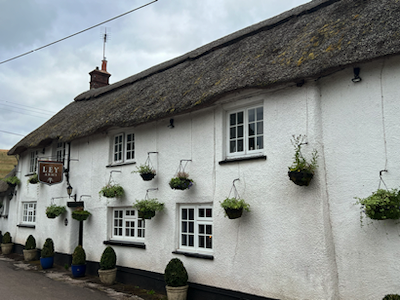
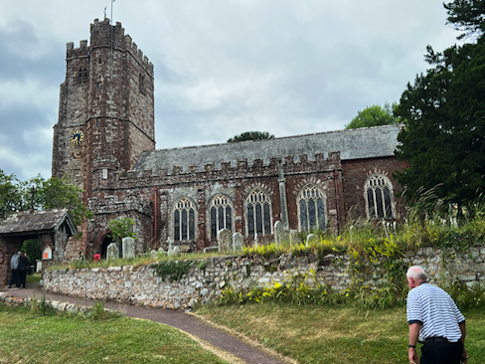
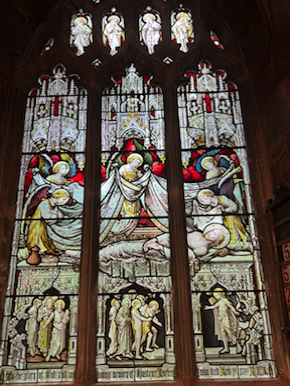
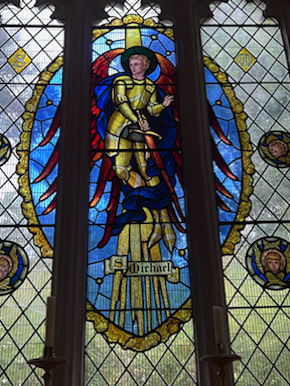
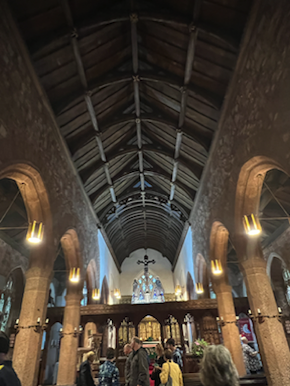
You can see below a box of 31 small photos. You can also see only 14 photos, but click on the #1 to #2 to view the next 20 photos. You can click on any photo to see it enlarged OR just click on the 1st photo and wait....it will present a slide show of all 31 photos that advances every 5 seconds.
Photos of Kenn & St. Andrew's Church